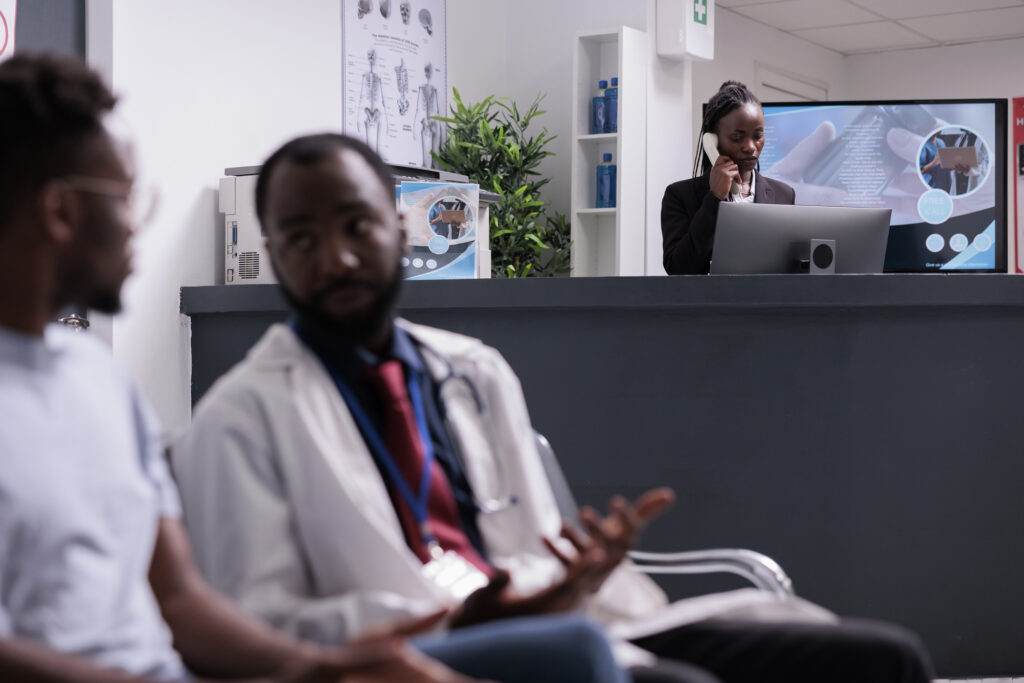Many practices hire nonclinical staff to answer phones and pass along medical messages to nurses and physicians. In addition, companies known as medical answering services may be contracted by doctors’ offices to handle overflow calls during the day, as well as those that come in after business hours. While their work is very beneficial, maintaining these operators can come with a few challenges. Here are three main examples, and tips that your team can use to address them.
Staff Turnover
You’ve probably heard about shortages of nurses and physicians since the COVID-19 pandemic, but nonclinical staff turnover has been equally surprising. One reason for this is that these operators are on the frontlines of their respective medical practices. As Fierce Healthcare notes, this can put them in a “pressure cooker [of] answering phones, signing in patients, [and] fielding questions” that, if not properly supported, can ultimately leave them feeling burned out.
Then there are those operators who don’t wish to resign, but are concerned about being let go. Becker’s Hospital Review notes an uptick in medical employees who admit to looking for fallback career options, as they worry that health care will start to mirror the tech industry’s recent high-volume layoffs.
The solution: Do what you can to retain the staff you have, says Fierce Healthcare, whether that means sitting at the front desk to see what the call volume is like, or finding the appropriate support to help your nonclinical operators. Make sure to demonstrate your appreciation for those who do a good job, and highlight the value that they provide. For those who have been around for a while, ask them about the factors that have encouraged them to stay, as this information may help you develop strategies for retaining additional employees moving forward.
Training on Medical Message Accuracy
Nonclinical operators are typically not medically certified, which means it can be difficult for them to evaluate exactly what messages to send to providers, and how to ensure that those messages contain enough information for said providers to respond appropriately. Incomplete information makes it difficult for nurses and doctors to prioritize urgent calls correctly, leading to potentially harmful delays in care. TriageLogic’s own statistical analysis demonstrated that about one-third (⅓) of 911 calls were documented insufficiently to alert providers that they were urgent. From what we’ve seen, these inaccuracies are common for many practices.
The solution: While training may yield temporary improvement, the best way we’ve found to address these errors has been through a medical intake tool designed specifically for operators. Our latest development, an artificial intelligence solution known as MedMessage Assist, has demonstrated an accuracy rate of over 98% — better than any training we’ve ever provided. By analyzing the text that nonclinical staff record while they’re speaking with patient callers, MedMessage Assist identifies when these operators should ask patients additional questions to clarify their symptoms. Triage nurses are then able to properly vet each call and respond during the appropriate callback window.
MedMessage assist can integrate with your own patient software, or be used as a standalone module. It’s also self-teaching, offering intuitive guidance to your new users in the same ways that it prompts them during actual patient phone calls.
Training for Nonclinical Staff
While nonclinical message takers are typically not trained in medicine, they may also lack instruction on how to approach callers who are being rude or combative. We’ve talked before about the kinds of difficult calls that triage nurses experience, and those same situations apply to your nonclinical operators. Since they’re often the first points of contact for these patients, operators can often receive the initial brunt of emotions that callers are experiencing.
The solution: Establish internal or outsourced training that will give your nonclinical staff the understanding and confidence to be effective in their roles. Many of the methods that we train our own triage nurses on can be used by your team to handle upset or angry callers, worried parents, cases involving alcohol and other drugs, child abuse, and other equally stressful episodes. You can also look at our Learning Center for videos and lessons on helping patients over the phone. In any case, making sure that you have intuitive software that your nonclinical staff can use to thoroughly document all interactions with your patient callers, prior to submitting those messages to providers and nurses, is paramount.
Take Care of Your Nonclinical Staff
It wasn’t long ago that PatientEngagementHIT noted that nonclinical staff account for roughly half of all healthcare workers, and contribute heavily to value-based care. Even when these members are only involved in front desk work and answering patient calls, that doesn’t negate how vital they are to the overall care coordination of your entire team. When supported properly, nonclinical staff can help you improve patient health outcomes, alleviate burdens on your certified staff, and save your practice substantial revenue.
Would You Like Help With Medical Answering Services?
If you and your team are interested in the solutions we outlined above, let’s talk. Contact us to discuss MedMessage Assist, nonclinical training, and other valuable patient engagement strategies.
About TriageLogic
TriageLogic is a URAC-accredited, physician-led provider of top-quality nurse telehealth technology, remote patient monitoring, and medical call center solutions. Founded in 2007, the TriageLogic Group now serves more than 12,000 physicians and covers over 25 million lives nationwide.





